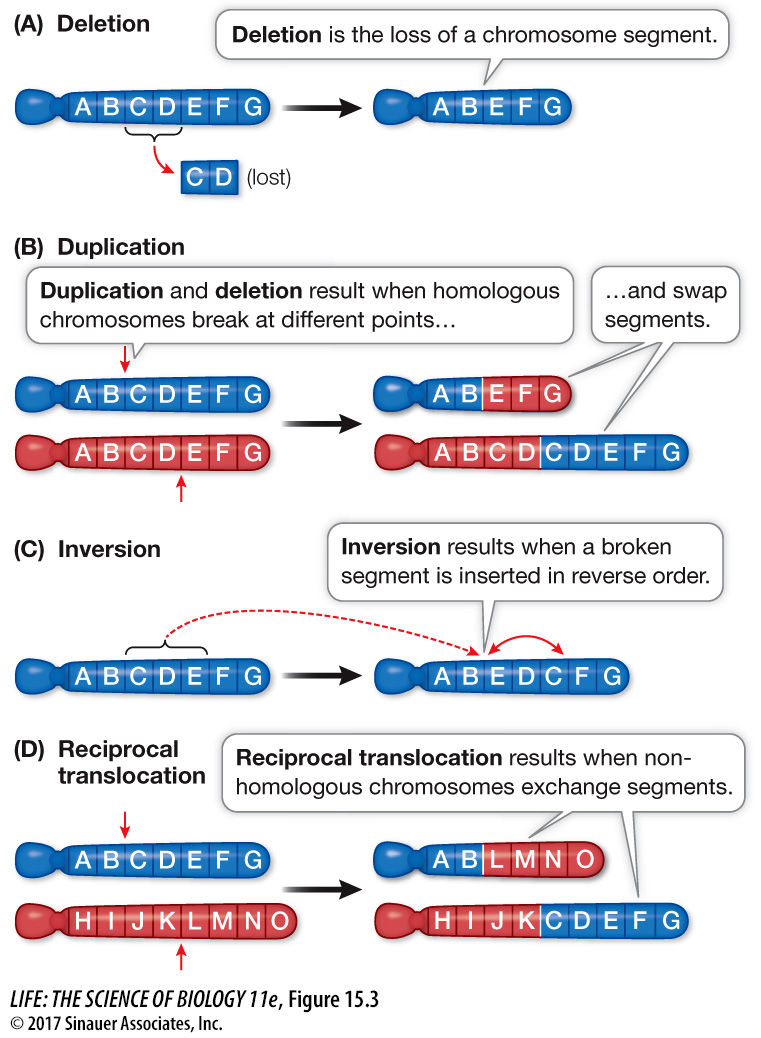Chromosomal mutations are extensive changes in the genetic material
Changes in single nucleotides are not the most dramatic changes that can occur in the genetic material. Whole DNA molecules (that is, whole chromosomes) can break and rejoin, grossly disrupting the sequence of genetic information. There are four types of such chromosomal mutations: deletions, duplications, inversions, and translocations. These mutations can be caused by severe damage to chromosomes resulting from mutagens or by drastic errors in chromosome replication.
A deletion occurs by the removal of part of the genetic material and can happen if a chromosome breaks at two points and then rejoins, leaving out the DNA between the breaks (Figure 15.3A).
A duplication can be produced at the same time as a deletion and can occur if homologous chromosomes break at different positions and then reconnect to the wrong partners (Figure 15.3B). One of the two chromosomes ends up with a deleted segment, and the other has two copies (a duplication) of the same segment.
An inversion can also result from the breaking and rejoining of a chromosome, and can occur if a segment of DNA becomes “flipped,” so that it runs in the opposite direction from its original orientation (Figure 15.3C).
A translocation results when a segment of a chromosome breaks off and becomes attached to a different chromosome. As we mentioned in Key Concept 11.5, a translocation of a large segment of chromosome 21 is one cause of Down syndrome. Translocations may involve reciprocal exchanges of chromosome segments, as in Figure 15.3D.

Q: How are chromosomal mutations detected? Hint: See Figure 11.20.
Chromosomal mutations can be detected by staining dividing cells with dyes specific for each chromosome. Stained chromosomes can then be identified, and missing pieces or translocated pieces can be observed. Inversions can be detected by a special method called banding, whereby dyes on chromosomes produce banding patterns instead of colors. In this case, a reversal of bands can be seen.